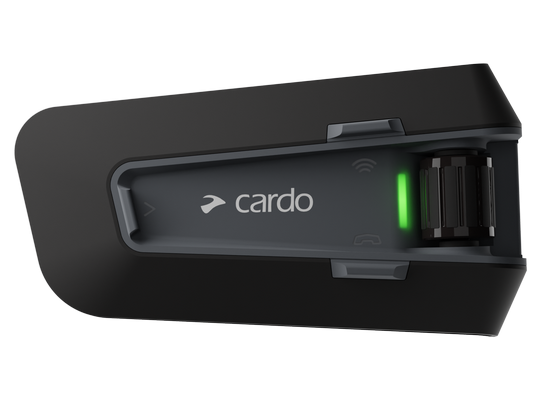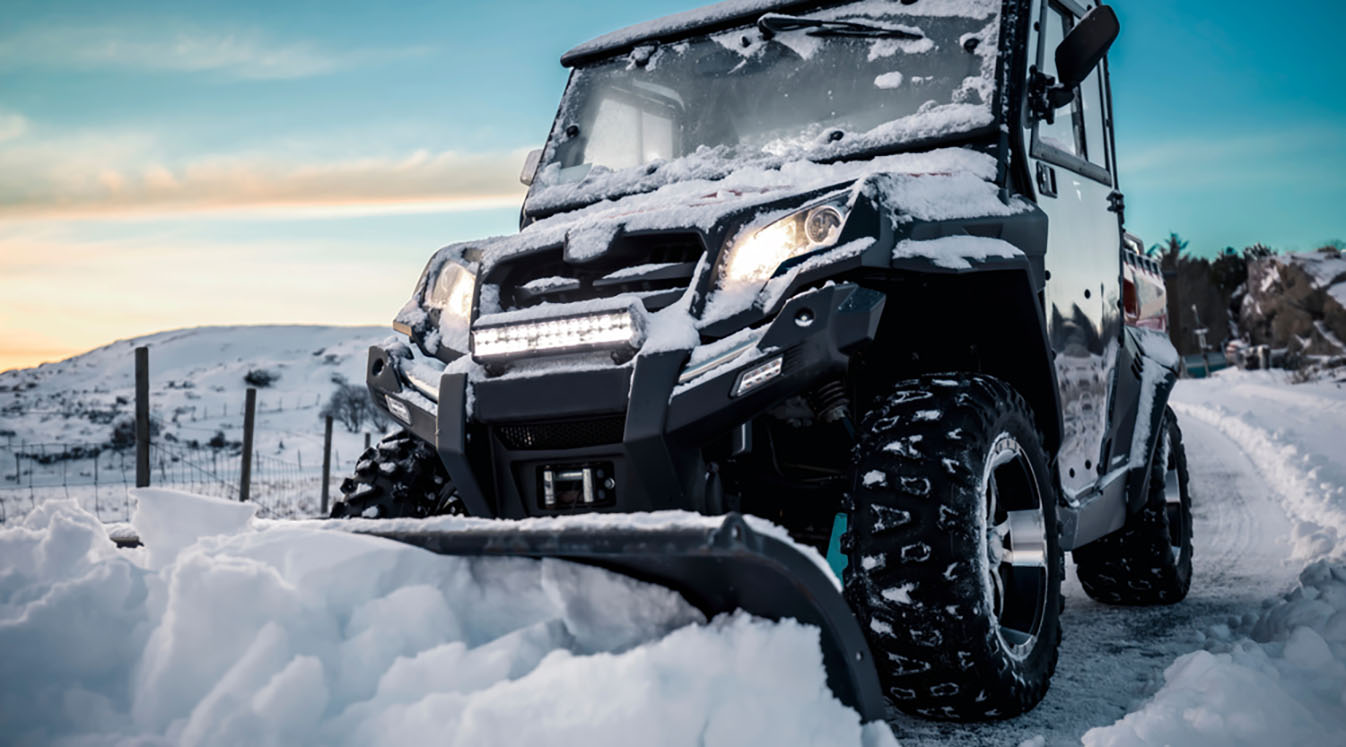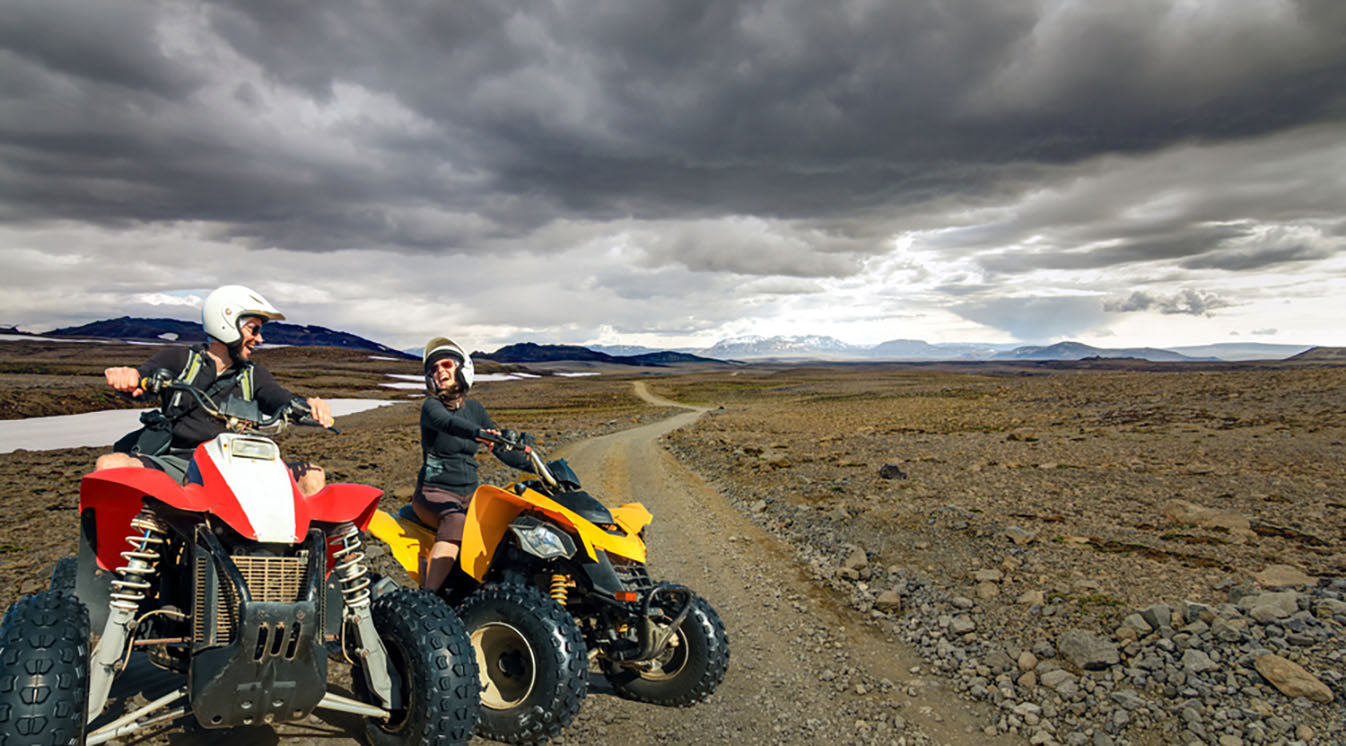Read Our The Ultimate Guide to ATV Riding Gear
1. Use the Right Type of ATV
Not all ATVs are made for plowing. The vehicle needs to be large enough to accommodate a snowplow. Depending on the snow’s texture, you safely plow anywhere from 4 inches to 12 inches of snow. The larger the ATV, the more powerful it will be. If the engine is any smaller, the vehicle won’t have enough power to support the added equipment. The vehicle itself should weigh between 400 and 700 lbs. Assuming you are using the correct type of vehicle, you should be able to plow anywhere from six to eight inches at a time. If there is more snow on the ground, use a snowblower or shovel to do some of the heavy lifting beforehand. Check the manufacturer’s recommendations for more information before modifying your equipment.
2. Attach the Proper Plow
Mount the plow on the front of your ATV to start hauling snow. The plow can be made of steel or polyethylene. The former is more durable but will add extra weight to the vehicle. Polyethene is lighter and easier to install, but it won’t be able to withstand as much wear and tear. A minor collision could easily dent or damage your plow, so make sure you are only using it to move snow and not other types of debris like rocks and trees.

Source: diy13/Shutterstock.com
You can use either a straight plow or a V-shaped plow. It all comes down to your preferences. Straight plows are great for pushing fresh powder, but V-shaped plows will cut through large chunks of ice. The V plow is more about clearing a path in the snow, pushing the snow and ice off to the side. Straight plows are better for clearing off a driveway.
Consider approaching large snowbanks and drifts from an angle to cut through the added weight.
3. Safety First
Plowing exposes your body to the elements during the coldest months of the year. You won’t have an enclosed space to keep you warm behind the wheel. Wear all the proper ATV riding gear when plowing, including waterproof gloves, pants, coat, boots and insulating layers to keep your body temperature up. Wear a hat and/or helmet to reduce your chances of injury. You might need to be outside for several hours, so ensure you have everything you need to stay warm. Go inside to warm up if the weather takes a turn for the worse.
4. Stay in Touch
ATVs are often used as plows in rural and off-road areas where it’s easy to get lost. The snowy terrain can leave you stranded in the middle of nowhere if your vehicle doesn’t have what it takes to get the job done. Use off-road communication to wirelessly connect to your companions or mobile device while plowing. You shouldn’t have to take your hands off the wheel to send a message or get directions. Stay in sync with the rest of your team to keep track of each other’s location. You can report on the conditions of the road, send for help in an emergency or work in unison as you clear the land in half the time.
Use Off-Road Communication to Stay in Touch
5. Repair and Maintain Your Vehicle
You can’t use a broken-down ATV to plow, or it will just get stuck in the snow. Store your ATV in a warm location when it’s not in use to keep the engine from freezing up. Plowing puts extra wear and tear on the vehicle, so change the oil, maintain the belt and drivetrain and keep your tire pressure up to tackle any type of terrain that comes your way. Consider adding all-terrain or snow tires to your ATV for more traction and control.

Source: Victor Yarmolyuk/Shutterstock.com
ATVs can double as snow plows if you are using the right equipment. Otherwise, you run the risk of permanently damaging your vehicle. Keep these tips in mind to clear a path without putting your ATV through the wringer.









